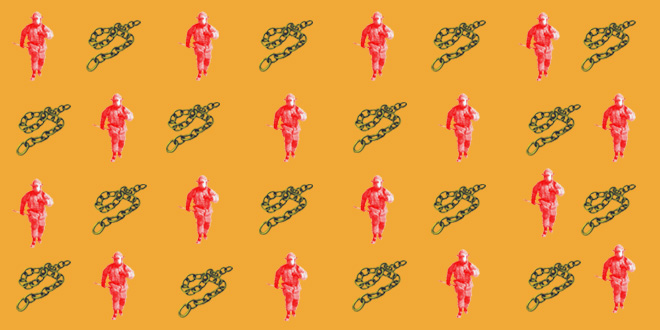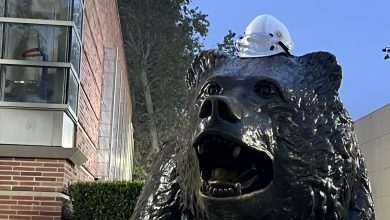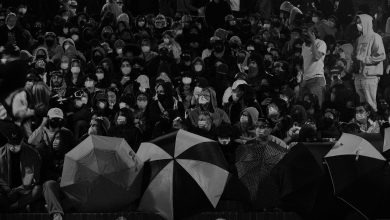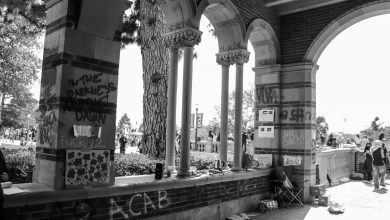Modern-Day Enslavement of Inmate Firefighters: An Interview

Design by Shannon Boland
Inmates have been fighting some of California’s most dangerous fires. Those that are on good behavior may volunteer to train at these low-security fire camps, which are camps that have minimal security compared to prisons. They are valuable to the state of California because they provide arduous labor at a low cost. This situation is undeniably an example of modern-day slavery. I interviewed an individual who served three years of his sentence fighting fires in California. For the purpose of maintaining his privacy, I will give him the pseudonym of James. James explained that he and the other incarcerated individuals were always the first on the scene in the line of fire, while engine crews remained outside of the line. The engine crews are full-time firefighters that are paid minimum wage or more, while the inmates are given base pay of two dollars plus one dollar per hour during actual fires. He recalls being a mere 20 feet away from 25-50 foot flames with heat so intense that he suffered a steam burn from just a drop of water on his handkerchief.
A lot of these fires were in mountainous areas making it difficult for the engine crews to hike through the burning brush and trees with fire hoses. Their fire gear, which was far from new, would have been less suitable for the long day and night shifts because visibility is a necessary factor in maintaining safety. On their backpacks were just a couple of patches of high visibility reflectors, to make the inmate firefighters more visible in dark or smoky conditions. At the time that James was at the fire camp, their coats had no high visibility reflectors. It would have been safer for the inmates to wear reflective tape not only on their backpacks, but on their coats as well. At times, the inmates would be laboring for about two to three days, which meant working through the night when high visibility coats would be useful. It is an outrage that the inmates’ safety was carelessly toyed with, and that they were not properly supplied with practical gear for their arduous work. Running on adrenaline, James and the other inmates would hike to the scene before the engine crews and hand cut a line four to eight feet wide that stretched for miles. They would cut off the tree limbs and shrubbery that was fuel for the fire until all that was left was bare dirt, while the engine crews stayed at the baseline.
James shared a time when he and the other inmates were in the San Jose area fighting the Big Sur fire. After successfully containing the fire, the famished crews of inmates and firemen stopped by a local restaurant. His fire captain insisted that the inmates ate outside, while the certified firemen ate inside. This inherent discrimination was instantly rejected by the owner of the restaurant. She was so grateful that her town had been saved that she gave an ultimatum; both crews, inmates included, eat inside or else they would all have to find somewhere else to eat. The captain gave in and allowed the inmates to eat inside with everyone else. This act of solidarity was one proactive step towards resisting the idea that inmates are just sources of cheap labor. They have been dehumanized for far too long and are deserving of the same respect that is accorded to firemen. The locals upheld this value when they proceeded to applaud and shake the inmates’ hands out of gratitude. That day, they were not seen as inmates, but as heroes. Without them, the firemen would not have been able to get fire hoses and bulldozers into the affected areas. They are the “heart and soul of it all,” just as James explained to me, and they should be treated as such.
James described how the inmates’ labor was exploited, saying, “They know we’re desperate to be out of the prison, and they know we’re going to give it our all so they use that energy to their full advantage.” One way of capitalizing on the inmates’ circumstances was through their hourly wages. Pay was anywhere between $1-2.30 per day. Considering the constant danger that the inmates face, it is absurd that these wages are so low with minimum wage in California being $12 per hour. During off fire season, they did local projects for the maintenance of a county or city, such as cutting down tree limbs. It is no surprise that the inmates would be used for cheap labor, so that local governments would not have to employ skilled workers for higher pay. In an irritated tone, James said, “They would rent us out for our labor because we’d only get 1.50 offseason, and it’s like really? We’re saving lives.” He was paid $2.30 an hour during fire season because he took a training course to be a certified “C” level sawyer at the approval of a fire captain. He had to practice, train for an evaluation course, and take a test. He and all of the other inmates had to pass a PFT (Physical Fitness Testing) and a test called FST (Firefighter Selection Tool) to demonstrate knowledge of fire subjects such as terminology and fire behavior. The biggest outrage is that these certifications are the same as those that wildland firefighters have to complete; yet upon release, inmates have difficulty entering the profession because of their criminal record.
Unfortunately, discrimination is present even from parole officers and in the larger prison institution that refuses to supply the inmates with the tools to pursue their passions upon release. Regarding James’s personal experience, he said, “I loved it and I know there were a lot of other inmates that loved it as well, but you’re handicapped because they use you when you’re incarcerated, and they don’t want you in that circle when you’re out.” He blames the limited resources and lack of education needed for individuals to pursue firefighting once released back into society. He faced more discouragement than encouragement by his parole officer who often demoralized him with the attitude that he would return to prison. Government employees that discourage ex-convicts only contribute more to recidivism. James was never given proper outlets to develop his passion for forestry. It was frowned upon in his community of prison staff and other inmates because they assumed inmates joined the fire crew just to eat well or be outside of their cells. This mentality was ludicrous to him because to be accepted into fire camp, one must have a sentence of fewer than five years with no serious charges, including low-security points, which is not easy to attain. It is easy to imagine how an inmate who is conditioned to feel ashamed of his position, whether as an individual in a fire camp or one who was recently released, will feel less motivated to stay out of prison.
If prison institutions took rehabilitation seriously, they would make it possible for ex-convicts to participate in the public sphere in occupations such as firefighting. They should be given more than a certificate of completion for their service, and should not be barred from becoming firefighters. If the prison industry were concerned about rehabilitation, more funds would be put into psychological services. Service workers are treated for PTSD, but inmates are not afforded those same services, which could aid in keeping them out of the prison system. Inmates are in a milieu of violence. They usually carry emotional baggage from an abusive childhood and from being separated from loved ones, which is felt most acutely when family members die and they are not permitted to attend funerals. James described feeling “completely helpless” and in a state of constant stress during the time that he served his sentence and immediately after. He successfully rehabilitated himself on his own, but admits that he is still struggling, despite having a stable job. He wished that his prison promoted groups that encourage brotherhood and serve as examples of successful rehabilitation. Prisons need to stop disparaging and dehumanizing inmates, but as long as the emphasis is on punishment rather than rehabilitation this is too much to expect of such a corrupt and deficient organization.
Incarcerated firemen are a marginalized group that is exploited by the prison system for high-risk, cheap labor. Their efforts are overlooked and they are barred from entering that career once released. Progress needs to be made towards proper rehabilitation for these individuals in order to prevent them from returning to prison. They should be educated on how to fulfill their career aspirations. They deserve the same sympathy that the public shows our veterans who receive psychological counseling. Our inmates are enslaved by the prison system that prevents their upward mobility. We should honor their struggles and advocate on their behalf for better treatment.




